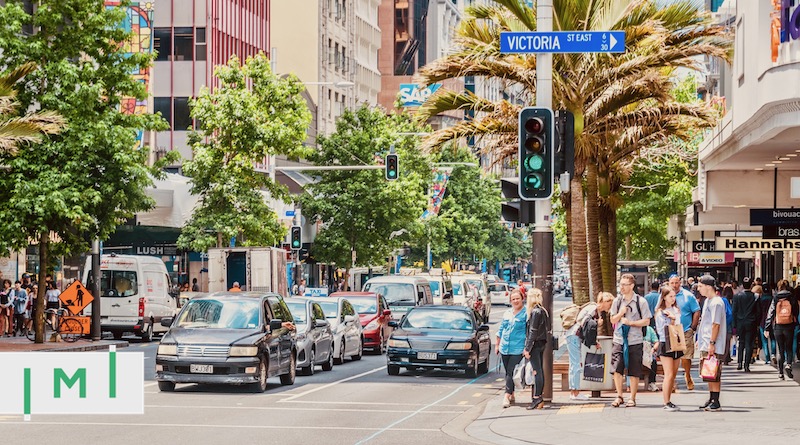New Zealand Issues Sweeping Changes to Investor Visas: Minimums of NZ$5-15 Million
A year after rumors of drastic program changes first emerged, New Zealand’s Minister for Economic and Regional Development, Stuart Nash, today announced a set of wide-ranging changes to the country’s Investor Visa program, which will take effect on September 19th.
Though still based on passive investment forms, the new category is named “Active Investor Plus” and will replace the highly popular and lucrative Investor 1 and Investor 2 categories, which will close to new applications on July 27th. Minister Nash explained the short notice before the existing program’s closure was intended to prevent a last-minute rush of applications. He promised, however, that the 700-odd Investor Visa filed already in the pipeline would be processed.
Lower minimum investment requirements for those willing to take higher risk
Intending to encourage the development of Kiwi companies with “high-growth potential”, which the government said it considered more likely to create employment, the new program will reward applicants who invest directly in the equity of New Zealand firms by imposing a lower minimum investment (NZ$5m) than it will for applicants who prefer to invest in “indirect” asset classes like publicly listed securities, private investment funds, or charities, which will be subject to a NZ$15m minimum.
The share of the total investment that can take the form of indirect positions will be capped at 50%, while the property development and bond investment options are now scrapped altogether.
While minimum investment amounts will rise to NZ$5m and NZ$15m (up from NZ$3m and NZ$10m for Investor Visa 2 and 1, respectively), the Active Investor Visa Plus category will have a minimum stay requirement of 117 days over the four-year period (about a month a year), regardless of the investment amount. This compares to the 88 days over three years required for Investor 1 and the 438 days over four years stipulated for Investor 2.
Companies targeted for such direct investment will need clearance from New Zealand Trade and Enterprise (NZTE), the country’s foreign investment promotion agency. The agency already works with some 1,400 “high-growth potential” firms, all of which are likely to be okayed, said Minister Nash this morning.
Applicants can invest over a three-year period
Whereas the current Investor Visa program mandates up-front investments, the Active Investor Plus category will allow applicants to invest gradually over a three-year period before they are permitted to divest in year four.
Minister Nash commented that the new policy aimed to “attract active and high-value migrants who will bring their international expertise to help New Zealand business to grow.” Nash said that under the existing Investor Visa program, which reportedly has raised more than NZ$12 billion since opening in 2009, more than half the funds raised had found their way to government or corporate bonds, an observation he characterized as a “missed opportunity” to attract “more active investors who can deliver real benefits to our economy over a long period of time.”
Michael Wood, Minister for Immigration, said the increased physical presence requirement would encourage investors to get more involved in the target company, “further sharing their expertise and connections.” Wood also remarked that spending more time in the country would “increase the likelihood of further active investment.”
Erica Stanford, spokeswoman on matters of immigration for the National Party, the largest of the opposition parties, questioned the need for reforming a program that’s already highly effective in raising capital for New Zealand. She pointed to research from the Productivity Commission, which had concluded economic immigrants typically used lower-risk investment classes like bonds and other publicly listed securities as an entry point before eventually going on to make more of the kinds of direct and active investment the government hopes to engender with today’s policy change.
David Cooper, CEO of Malcolm Pacific Immigration, New Zealand's largest immigration advisory firm, indicated the reforms would change the profile of investors the program would now attract: Those with a higher tolerance for risk, a much smaller group of people than those currently participating in Investor 1 and 2. He expressed skepticism as to whether large numbers of investors would find the NZ$15m segment attractive. He further lamented the introduction of an English language proficiency requirement, which he said would exclude large groups of prospective applicants.
The last time New Zealand's Investor Visa programs saw significant policy changes was in 2017, when it doubled the minimum investment for Category 2 to NZ$3m, a move considered successful for having raised overall FDI as the price-increase did not lead to a reduction in applications.
The country's Investor Visa famously sports the world's highest rejection rates, regularly discarding between a third and half of all applications.
That has not stopped the program from punching far above its weight in terms of capital generation; FDI through the program has routinely rivaled that of the erstwhile Investor Visa of the UK, a country with 14 times the population of New Zealand.


